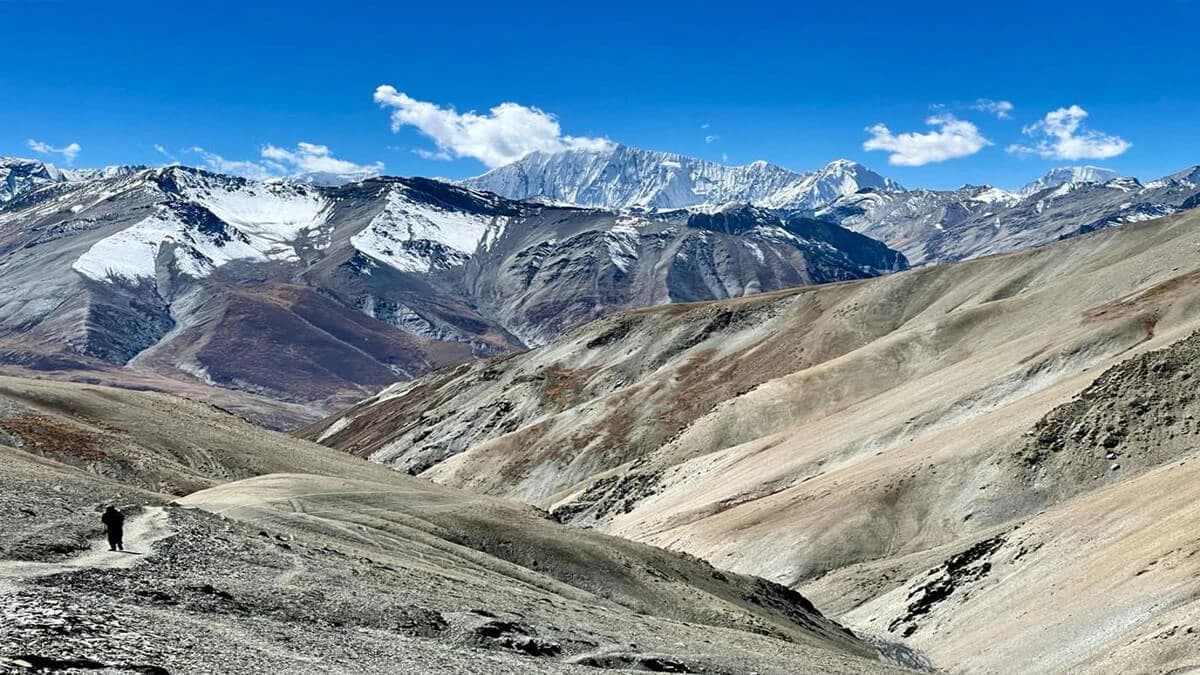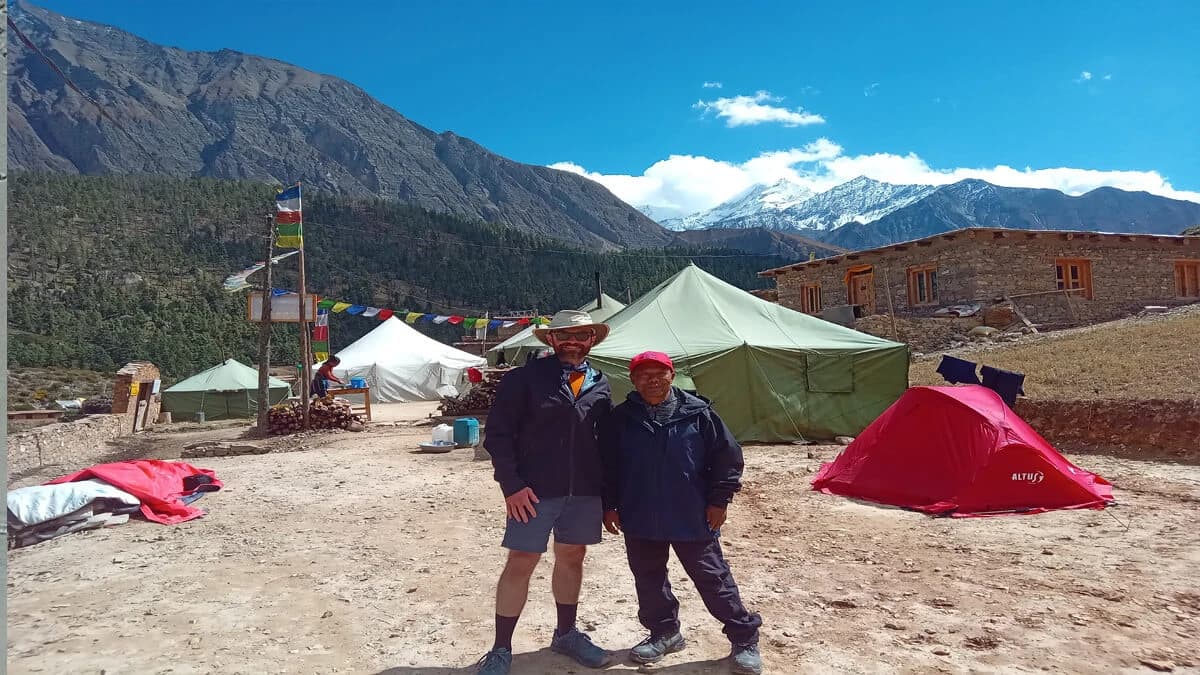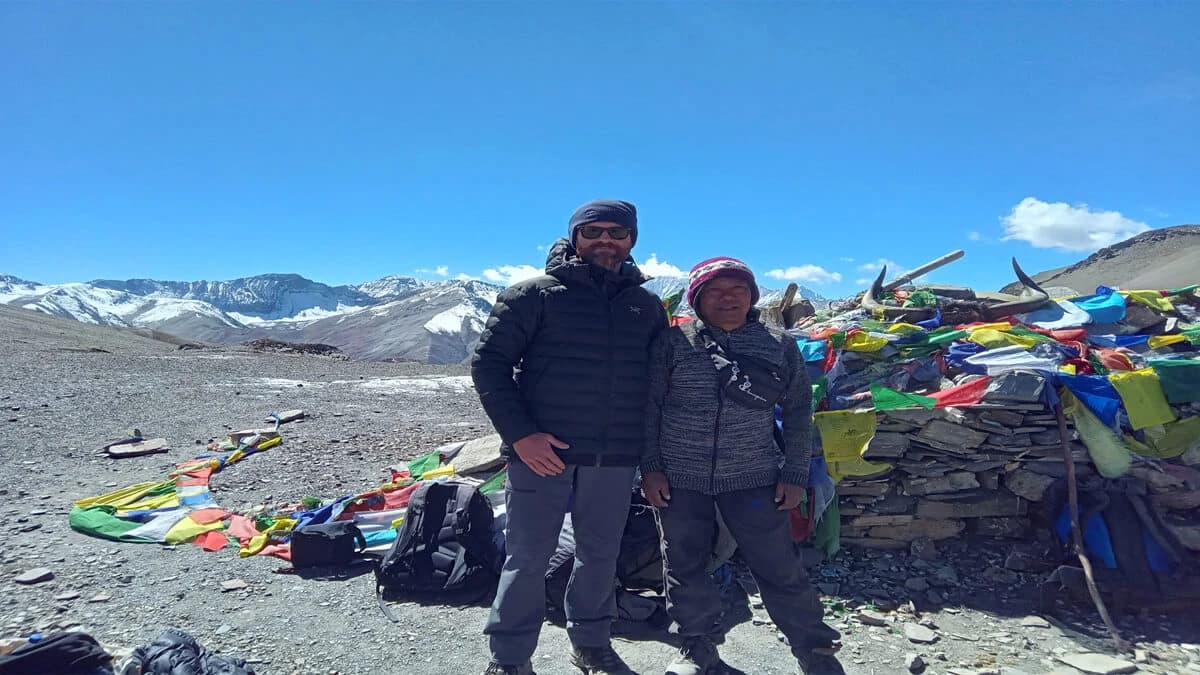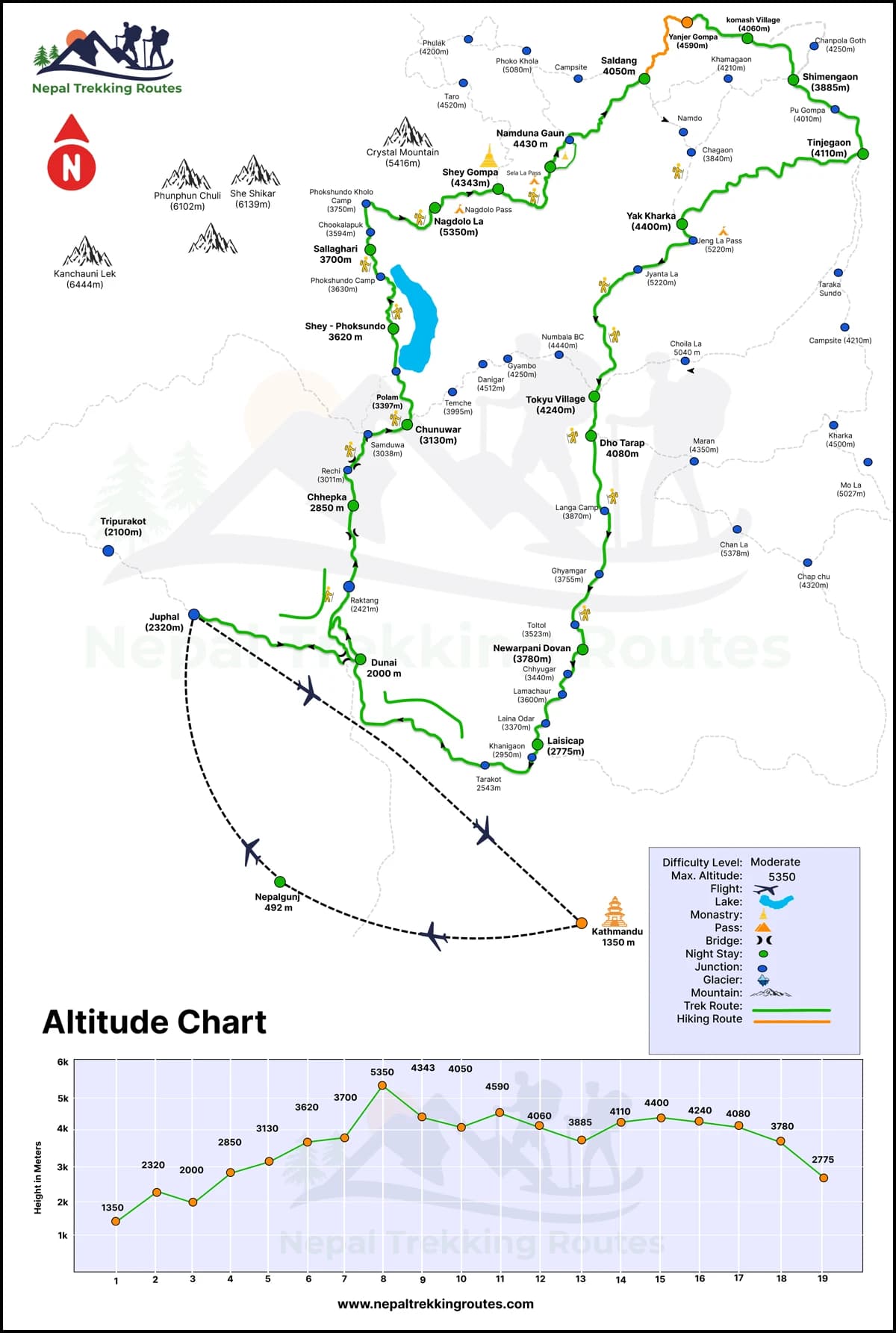Upper Dolpo Trek Overview
Do you want to experience trekking in Nepal differently? Are you ready to trek to unexplored valleys distinct from the Everest Base Camp Trek or Annapurna Circuit trek? If it is so, Upper Dolpo Trek is the right option.
Upper Dolpo Trek (also called Inner Dolpo Trek) takes you to the Karnali Province of Nepal. As the rain shadows of Dhaulagiri (8,167 m) and Tibetan Plateau, it is the hidden gem of Nepal. Although the region lies in the territory of Nepal, its geography and culture resemble with Tibetan Plateau.
Almost abandoned part of Nepal until 1989, this region has become a hotspot of international tourism these days. This hidden gem gained popularity along with the publication of two books and the making of a movie.
The author duo Matthiessen and Schaller published a book titled “The Show Leopard” in 173. Next, David L. Snellgrove released another book “Himalayan Pilgrimage” in 1988. Both books describe the natural and cultural assets of the Dolpo region.
Eric Villi’s 1988 movie “The Himalayas” brought this forbidden kingdom of the Nepalese Himalayas into the limelight. This movie was also nominated for the OSCAR, the greatest film award in the world. The movie has featured the hardships, yet beauties of this remote region.
Gradually, the Nepalese tourism agencies realized the captivating caliber of this hidden valley. Then, collaborating with the Nepal Government, they managed to open it for foreign travelers. Since 1990, this virgin land has been continuously drawing the attention of avid trekkers.
The snow-capped peaks of western Nepal and the Dhaulagiri Massif (8,167 m) make your Upper Dolpo Trek in Nepal more valuable. Explore the flora and fauna of Shey Phoksundo National Park, Nepal’s largest conservation area, and Shey Phoksundo Lake, Nepal’s deepest lake.
Best Upper Dolpo Trekking Highlights:
- Hidden valleys of the gem of the trans-Himalayan region
- Shey-Phoksundo Lake
- Shey-Phoksundo National Park
- The Bon-Po and Buddhist shrines, lifestyle, culture, and tradition
- the Sacred Crystal Mountain
- Dho Tarap, one of the highest-altitude human settlement areas in the world
- Breathtaking view of the numerous snowy peaks of Nepal
- Camping Trekking in Nepal
Upper Dolpo Trek Itinerary
Upper Dolpo Trek Itinerary takes 18-27 days. Depending on the itinerary, the journey starts with a flight to Juphal, then trekking through Dunai, Chhepka, Chunuwar, and Shey Phoksundo Lake. You will visit the remote villages such as Saldang and Dho Tarap after crossing high passes like Kang La/Nagdalo La. Returning to Juphal via Tarap Valley marks the end of the trek. The Dolpo trekking is challenging but rewarding. It offers a memorable experience in one of the remote regions of Nepal.
The Upper Dolpo or Shey Phoksundo Lake Trek itinerary can be customized to fit your needs:
- Duration: Adjust the length of the trek by adding or reducing acclimatization days or side trips.
- Route Variations: Make extra stops at places like Ringmo Village, Shey Gompa, or Tarap valley for cultural exploration.
- Accommodation Options: Depending on your comfort level and budget, choose between camping or teahouse stays.
- Guided or solo: Choose a guided trek for safety or a solo trek for flexibility.
- Consider Season: Plan for spring or autumn for the best weather and scenery.
Upper Dolpo Trek Cost
Being an RIT, Upper Dolpo Trek Cost is higher than FIT in Nepal. You need a restricted area trekking permit by paying a special cost. Besides this, you need to pay for other permits for Upper Dolpo Trekking.
It is a camping trek in Nepal requiring a crew consisting of cooks, porters, and a crew leader. You have to pay their daily wages (plus tips only if you want). But you don’t have to spend on accommodation services because you sleep at the tented camp.
To reach Juphal from Kathmandu via Nepalgunj and return the same way, you need air tickets. Flight tickets are more expensive than bus tickets.
Upper Dolpo Trekking Costs can be minimized because you need not bear personal expenses. As the Trekking route moves through a complete wilderness, there are no shops, cafés, hotels, etc. to spend extra money.
Nepal Trekking Routes Upper Dolpo Trek can be customized according to your preferences. If you want to skip the return journey on foot, then you can choose Upper Dolpo Trek Helicopter return. It will save our time and you can enjoy the aerial views during the flight. You can also opt for Luxury Upper Dolpo Trek for additional comfort and premium services. A private Upper Dolpo trekking tour includes personalized services, professional guides and cultural experiences.
The 27 Days Upper Dolpo Trek price from Kathmandu range from $4,100 to $3,500. We offer group discounts and affordable options according to your Upper Dolpo Trek budget plan. For further information, contact us via email or WhatsApp.
Upper Dolpo Trekking Permit
To learn about the Upper Dolpo Trekking Permit, let’s discuss Free Individual Trekking (FIT) and Restricted Area Trekking (RIT). You can make FIT towards the Nepal trekking region which doesn’t have any restricted areas while RIT is a rule-bound package.
The human encroachment of such culturally and naturally fragile regions may be unproductive to the local nature and culture. To protect cultural variety and biodiversity, the government of Nepal has declared this region as a restricted area. Therefore, you cannot do the Upper Dolpo Trek as a solo trekking in Nepal.
If you want to explore the genuine natural and cultural assets of such a place, you need a special permit. Talking about Upper Dolpo trek permit and fees, you are supposed to have:
- TIMS Card: NPR 2,000 for non-SARRC trekkers and NPR 1,000 for SARRC trekkers
- Lower Dolpo Restricted Area Entry Permit : $20 per person for first week
- Shey-Phoksundo National Park Entry Permit: $30 per person
- Upper Dolpo Restricted Area Entry Permit : $500 per person for first 10 days
What are the upper Dolpo Trekking Guide
Upper Dolpo to Mustang is a restricted area of trekking in Nepal, so you cannot do Upper Dolpo trek without a guide. For an organized trekking, you need to find the Upper Dolpo Trekking Guide. Among hundreds of local Upper Dolpo Trek tour operators, we are one of the most trusted Nepal trekking guides in the Himalayas.
After you book Upper Dolpo Trek Package with us, we will provide you with the best guide for Upper Dolpo Trekking. The guide introduces you to the natural and cultural wonders of the region. Our guides are highly professional and always committed to providing the best quality services to our valuable clients. The Upper Dolpo trekking guide cost ranges $25-$40 per day. However, you do not need to pay separately for our guide, as it is included in the package.
Should you wish to prolong your vacation and continue your adventure, we are more than capable of organizing thrilling treks and enriching cultural tours in Nepal, as well as in neighboring countries such as India, Tibet, and Bhutan. Your journey can extend beyond Upper Dolpo, offering you the opportunity to explore even more exciting destinations and experiences.
How to get to Upper Dolpo
Getting to the Upper Dolpo Trek involves following steps:
- Fly to Nepalgunj: From Kathmandu, take a flight to Nepalgunj, a town in west of Nepal.
- Fly to Juphal: Fly from Nepalgunj to Juphal, the starting point of trek.
- Start trekking: Begin your trek from Juphal, passing through Dunai, Shey Phoksundo Lake, and high passes like Nagdalo La to reach Upper Dolpo.
Juphal to Upper Dolpo trek requires special permits. You should plan for camping, as accommodations are limited.




